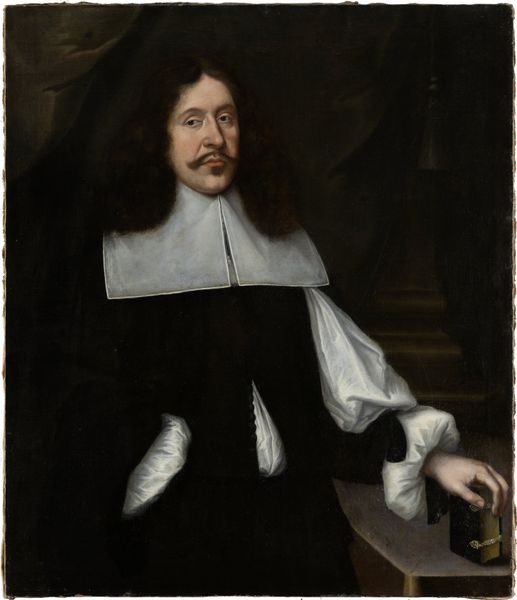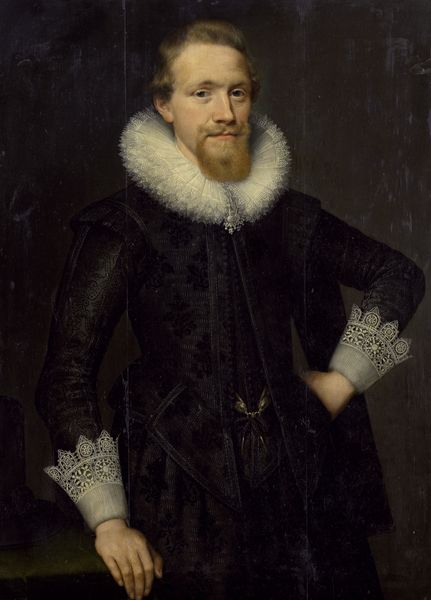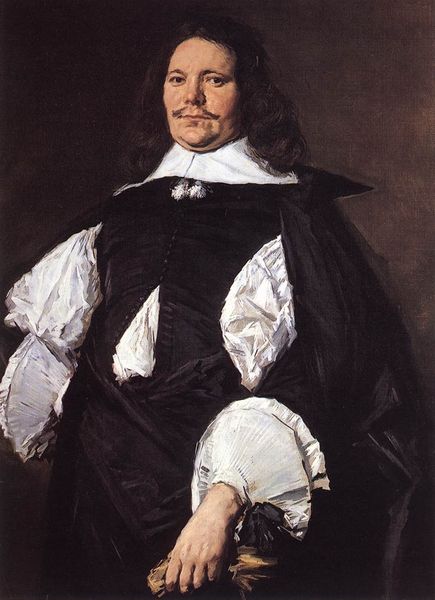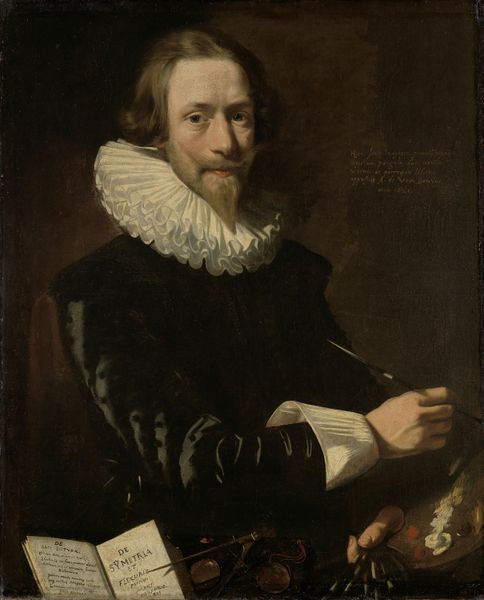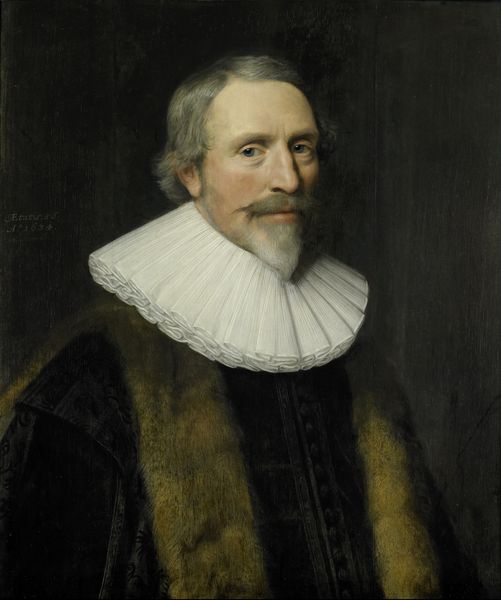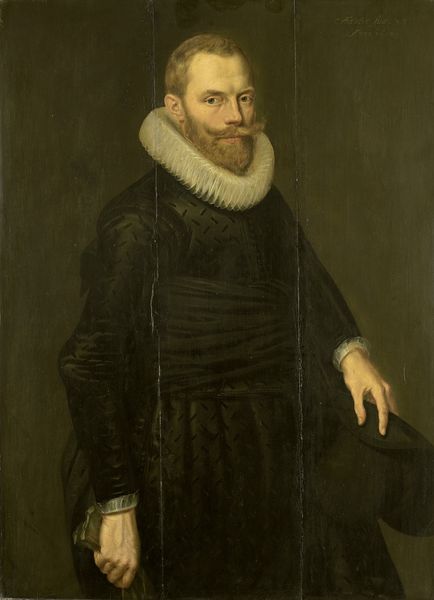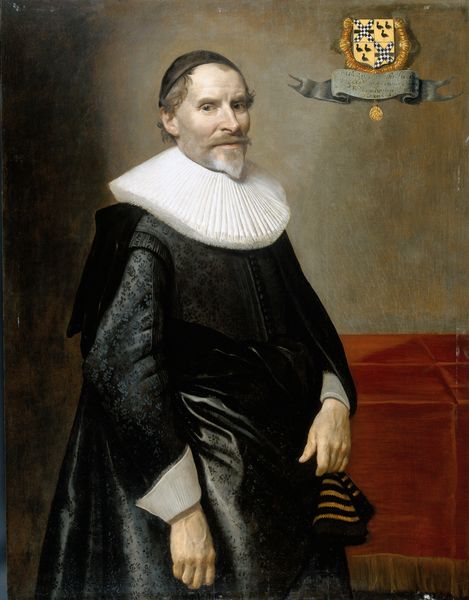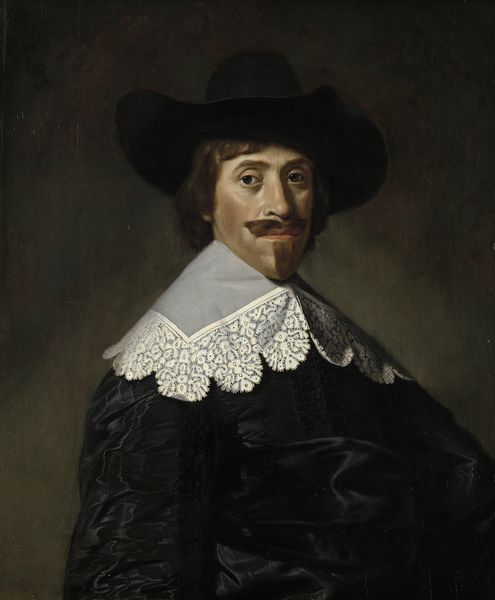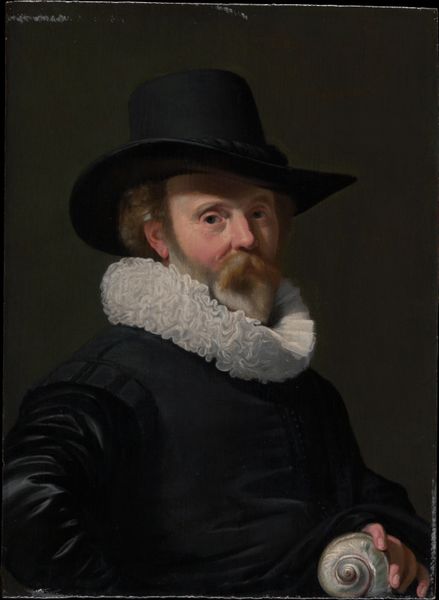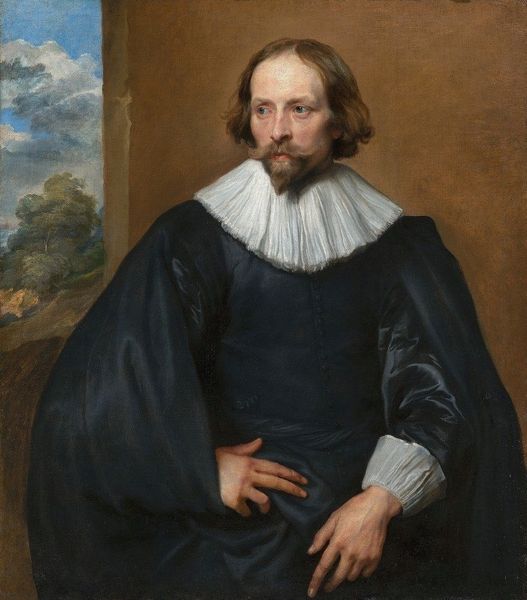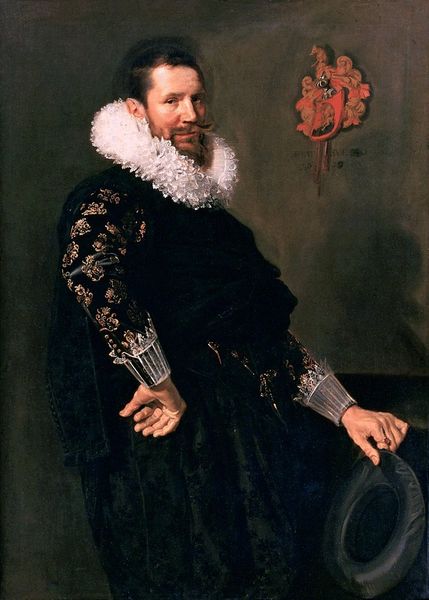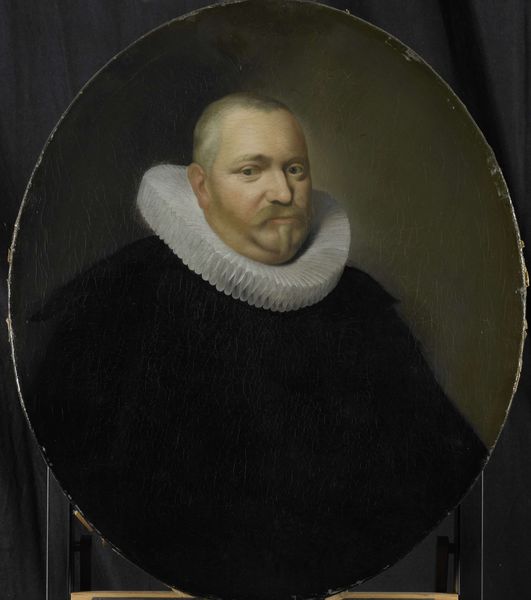
oil-paint
#
portrait
#
baroque
#
oil-paint
Copyright: Public domain
Editor: So, here we have Frans Hals's 1634 "Portrait of Tieleman Roosterman," created with oil paint. He certainly looks… important. What do you see when you look at this portrait? Curator: Beyond Roosterman’s obvious wealth signaled through his clothing, I see the visual construction of civic identity. Hals was *the* portraitist in Haarlem, catering to the aspirations of its elite. Think about the Dutch Republic at this moment; freshly independent and run by merchants and regents rather than kings. Editor: So portraiture was key in solidifying status, is that right? How does this particular portrait achieve that? Curator: Precisely. Look at the details: the stark, crisp white ruff against the black velvet; the carefully positioned hand holding his hat. This isn’t just about capturing a likeness; it’s about presenting an image of power, sobriety, and civic virtue, ideals prized by the Dutch Republic. Editor: It’s interesting to consider the choices made, not just for aesthetics, but for conveying a certain image fitting the times. How was the placement of such paintings handled then? Curator: Such paintings would likely hang in the sitter's home, perhaps in a prominent reception room, meant to impress visitors with the sitter's status. Then, also understand the larger role in creating visual traditions within families and a budding nation-state. Do you find the man sympathetic, or does he feel like an untouchable figure? Editor: Knowing the historical and social context does make it easier to understand the imagery and gives another appreciation for how paintings become tools for visual power. It also reveals the portrait as a cultural artefact. Curator: Absolutely. Hopefully, this highlights how art like Hals’ isn't just pretty faces, it's active in the politics of image-making.
Comments
No comments
Be the first to comment and join the conversation on the ultimate creative platform.
